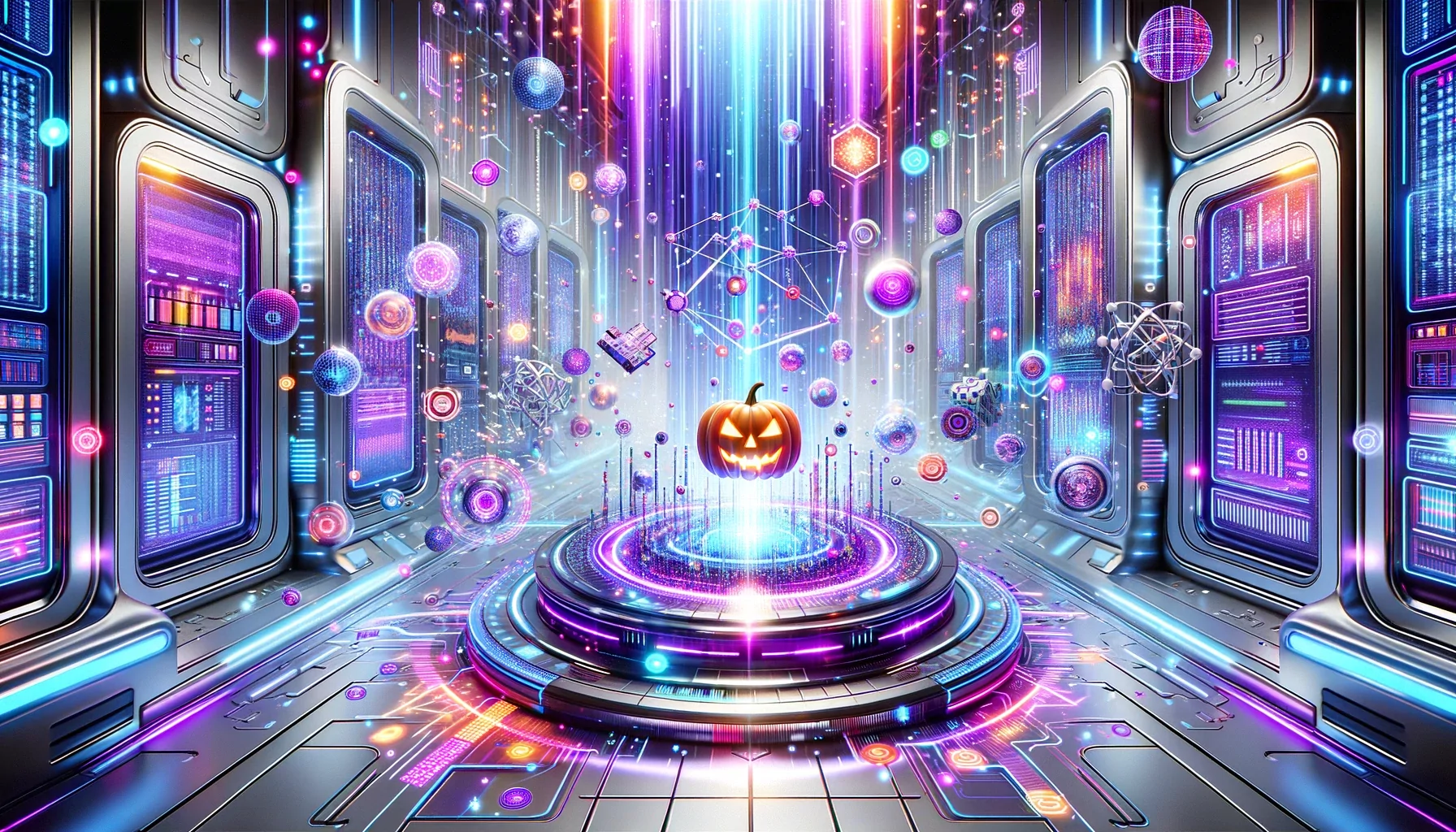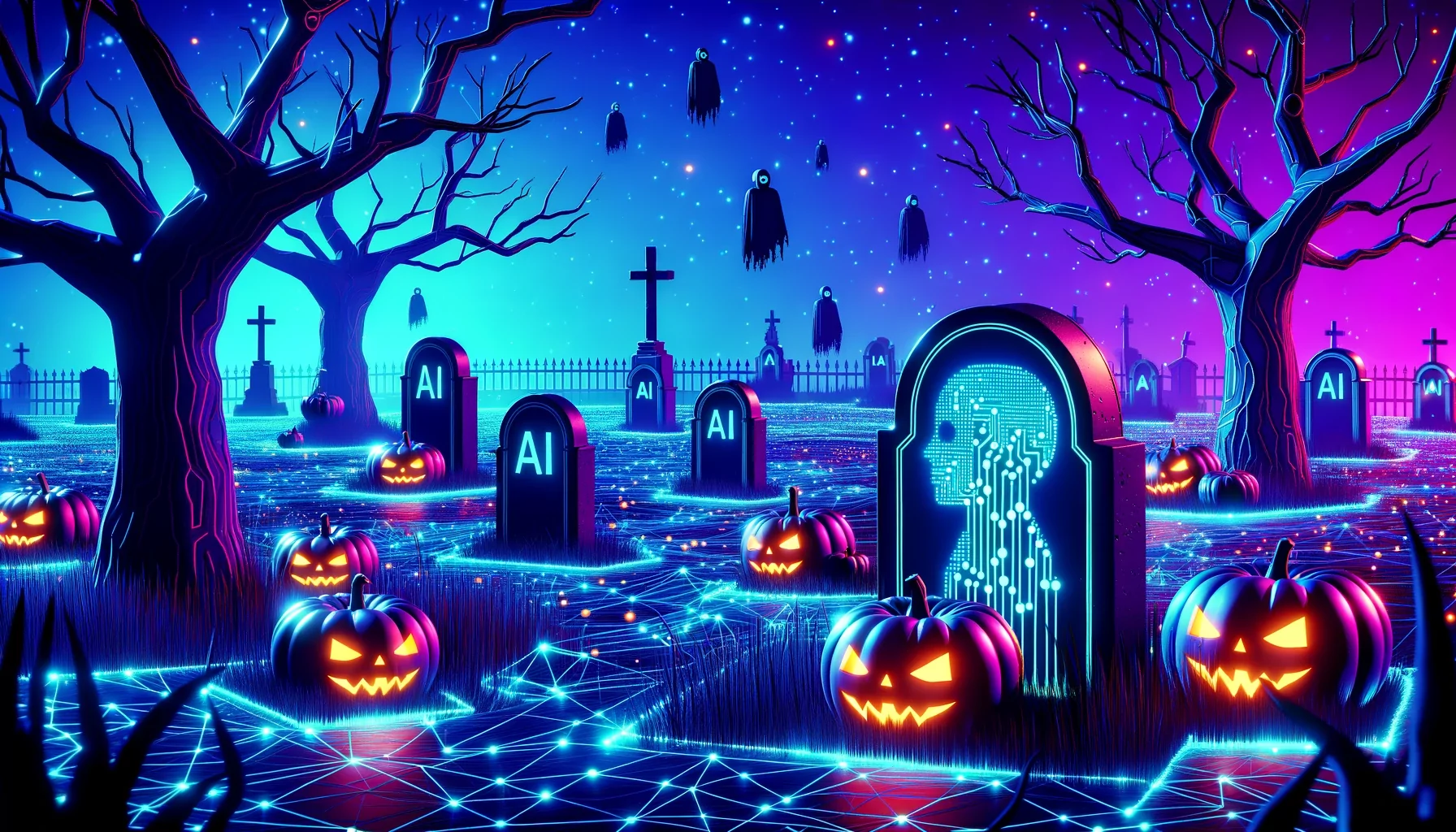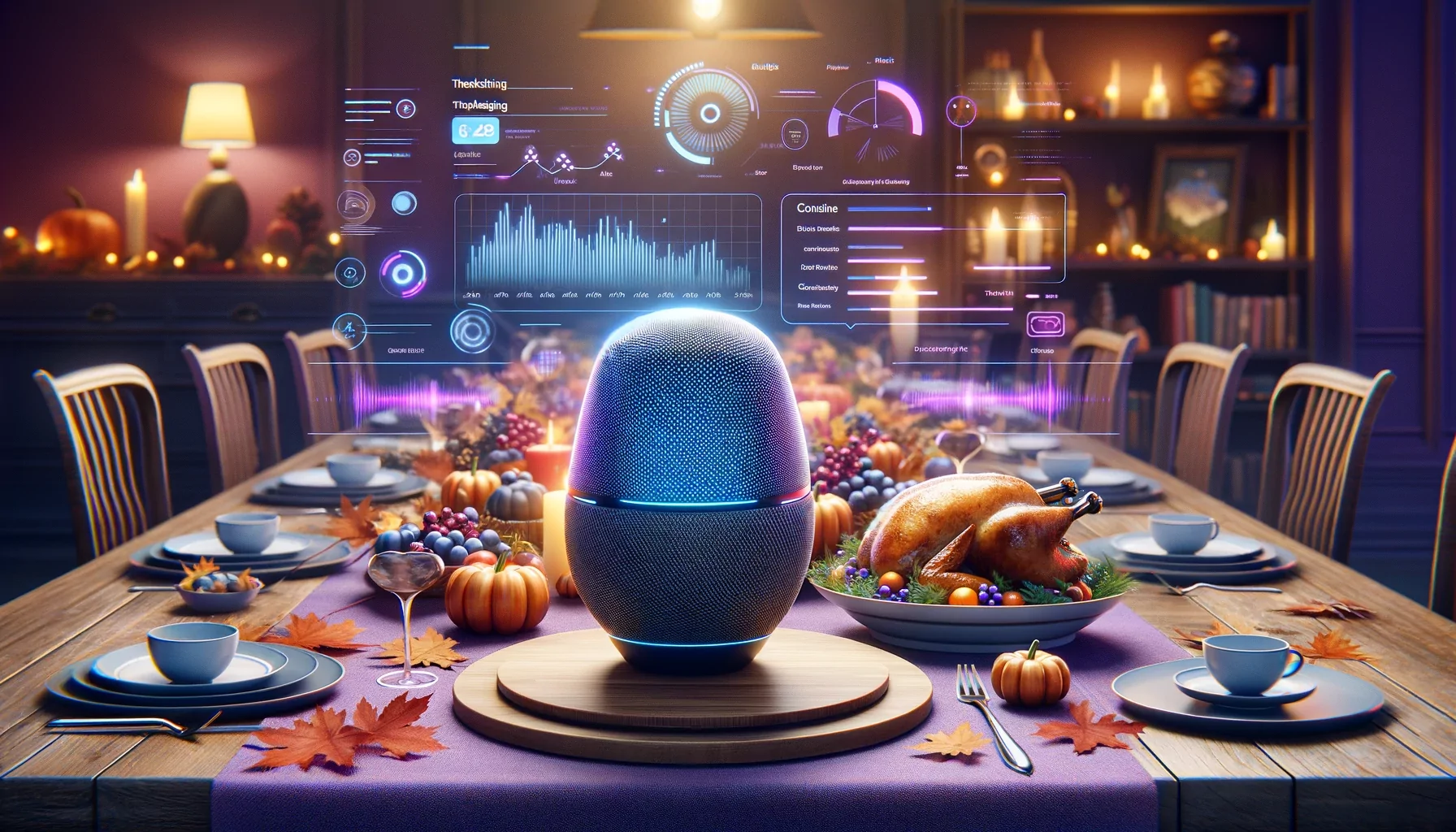The Haunting Power of Generative AI: ChatGPT’s Creepiest Creations

We asked AI to come up with all sorts of spooky stories, and immediately regretted it
Halloween is almost here, and its mystical and mischievous vibes are already in the air. It’s also the first Halloween celebrated by ChatGPT, making now the perfect time for it to enjoy certain festive traditions with its generative AI capabilities.
ChatGPT might not be able to go trick-or-treating, but it can surely join us in sharing some scary stories. This works to our advantage since spooky Halloween tales are excellent for almost any audience.
But can ChatGPT shine as the star of Halloween night? Will generative AI prove up to the occasion and excel at storytelling? For this purpose, we’ll be asking ChatGPT to write four kinds of short horror stories.
Get ready to feel some shivers run down your spine.
Brevity is everything: 6-word stories
Let’s start with the easiest yet most challenging kind of story — a 6-word story.
This short form makes writing misleadingly easy. Even a child can come up with 6 words, right? But a writer should carefully select these few words to make the story engaging and thrilling.
According to the rules of a 6-word story, the six words should provide conflict, action, and resolution while leaving space for readers’ imagination to fill the gaps. And the plot must be crystal-clear, too.
For example, Margaret Atwood’s story — “Longed for him. Got him. Sh*t.” — tells us about a person’s yearning for their love interest. But when they achieve their goal, the love interest disappoints them. Why? It’s up to the readers to imagine the reason and the red flags.
Still, the conflict and resolution are clear. A person dreams about being with their love or romantic interest only to feel disappointment after fulfilling their dream.
With that in mind, let’s see how good AI is at writing fiction.
Can we say the first try is a success?
Hardly.
The story keeps us guessing too much, such as “Is it a toddler giggling in the closet?” Giggling toddlers can scare you, especially if you open the closet and see clothes covered in lipstick or something smelly, but this isn’t the type of scary story we’re looking for.
Or maybe it’s a baby who can’t walk yet, and somehow it’s hiding in the closet because it’s possessed by a demon? Or perhaps it’s a creepy-looking doll that kidnapped an infant from the crib? The plot is ambiguous, so it’s not the best one.
But we’ll give generative AI another try.
This one is much better — intriguing, scary, clear, yet leaving you guessing what will happen next. I feel suspense in the air.
Let’s try another one.
This story is also decent. Even though we don’t know if it’s an intruder or a creature from the spirit realm, we can feel the tension and hear the floorboards creaking over our heads. Spooky!
Two out of three is a great score, proving that generative artificial intelligence is effective at content creation. But before we can make a definitive conclusion, let’s see how generative AI handles the next story.
More room for creativity: 2-sentence horror stories
Two-sentence horror stories aren’t new — they’ve been around in Reddit for years and they even inspired a Netflix series. Still, such simple stories are a great way to take part and set a spooky vibe for Halloween.
A two-sentence horror story has basically the same rules as a 6-word story, but you have more room to develop the plot. But don’t jump the gun — sentences can’t cover half of a page. The limit sits strictly at 300 characters.
So now it’s time to see what ChatGPT produces…
The story isn’t bad — conflict, action, and resolution are in place, as well as a bit of suspense and space for imagination. Only the plot is cliche. I’m sure you’ve seen or heard it with slight variations multiple times.
Let’s ask ChatGPT for another one.
Do you get it? I’m not sure what the story’s about. A child talking in her sleep? It would be creepy if she told something more sinister, like “She is behind you,” followed by a closet door creaking.
Maybe third time’s the charm?
This story is much better than the previous one. You can imagine opening your eyes and feeling shocked at hearing YOUR voice singing a lullaby. If it had happened in real life, I would probably stop breathing out of fear. Good job, ChatGPT!
Overall, generative AI does a good job of creating short stories, even though they sometimes lack clarity and originality. It also indicates that you can safely use ChatGPT for generating social media posts or Halloween-themed challenges.
But that was easy mode. What if we up the difficulty and ask ChatGPT to write a poem?
Poetry 101: Haikus
Haiku is a Japanese non-rhyming poem with a specific structure: three lines with different numbers of syllables, specifically 5-7-5. Originally, haikus were restricted to describing nature, but nowadays, people publish haikus on social media as a way to discuss hot topics with a playful twist.
This recent trend makes haikus a great option for creating some fun Halloween content.
Now let’s see if ChatGPT has any poetic talent.
This haiku gives a more mysterious than horror vibe, but it can be used as an epigraph for a scary story or social media post.
Let’s try another one.
This one can give you chills if you let your imagination run wild. I see a pitch-black night, a guy hurrying home along a deserted path, and a monster that hisses at him from the bushes before it jumps and buries its fangs in his neck.
Shall we try one more?
This haiku isn’t as scary, but it gives us creepy vibes for a bigger story, such as an apocalypse of the undead. Or it has the potential to serve as a spooky warning from an old witch to the main character of a horror story. Either way, as it turns out, we can even easily use AI in content creation for simple poems.
Now, we have one last task for generative AI to see if it can create a simple story that could be posted without human editing.
Twitter power: 280-character stories
A 280-character story is also famous as Twitterature, as it fits Twitter’s (now X) post requirement. This trend went viral in 2009 when two first-year students – Alexander Aciman and Emmett Rensin – summarized 60 classic works of literature in Twitter posts (then limited to 140 characters). It took social media by storm, and Penguin even published a book of these tweets.
One of my all-time faves is this brilliant summary of Shakespeare’s Romeo and Juliet:
“Romeo tweets his dying lament: O, I am fortune’s fool! Maybe just a tool. And so I die. BTW that other woman I was into before Juliet? Would’ve been a safer bet.”
This trend continues to live on, and it can easily be repurposed as a Halloween-themed challenge on social media.
On that note, let’s find out how ChatGPT will fare.
This story won’t win a contest, but it is a good start for a social media challenge. Not only does it have a spooky setting, climax, and resolution, but you can also feel the character’s panic.
However, all those short sentences make the plot fragmented as if we were watching a damaged videotape. Maybe if we clarify the requirements, ChatGPT will come up with something better.
Yes, this one definitely sounds better. It has suspense and tension, as well as a vivid (if a tad too literary) description of an asylum setting. It ends with a climax, just like TV showmakers often do to push you to the next episode. Sure, it might not be able to compete with Rensin and Aciman’s summaries, but I might as well use it to start a Twitterature challenge.
Overall, this experience was satisfying. It’s time to think about what we can learn from it.
ChatGPT: A useful tool for content-making in a marketer’s hands
I hope you’ve enjoyed this experiment as much as I did, but we have to admit that ChatGPT isn’t the greatest horror storyteller (unlike the screenplays to some of the Halloween movies). While you can copy and paste some of its stories, most still need some minor edits and retouches to fit your context and purpose. Typically, when creativity is involved, adding a human touch is the special ingredient for AI-generated content.
That said, AI in marketing and sales activities can be beneficial if it’s used for other purposes. Advanced AI tools can automate most marketing and sales agents’ mundane tasks, saving a company’s time and money in the process.
AiSDR is one such tool. AiSDR can create and tailor entire sales and marketing email campaigns for specific personas, as well as holiday outreach content for Halloween, Thanksgiving, Christmas, and more. With its automatically generated outreach and follow-up emails, it will ensure no leads slip through the cracks in your sales funnel.
Book a free demo and see how AiSDR can kick-start your sales.











